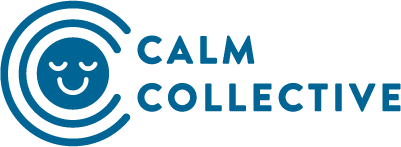Calm Collective’s Guide to Inclusive Mental Health Language
Language is a powerful tool that can either build relationships and connect people or create barriers that affect a person's sense of belonging. The words we use shape our perception of the world and those around us. They can convey hope and opportunity or reinforce negative stereotypes and low expectations.
What is inclusive language?
Inclusive language is a language that respects and acknowledges the diversity of human experiences and identities.
In this case, using inclusive language means taking intentional steps towards reducing the stigma of mental health.
Why does inclusive mental health language matter?
The way we communicate - from the words we choose to the way we speak and even the nuances we use - has the power to affect a person's self-esteem and contribute to social exclusion and disadvantage.
However, when we approach conversations with mindfulness and inclusivity, we can help create a more supportive and psychologically safe environment that allows for barriers to be overcome and understanding to be shared.
Person-first language vs. Identity-first language
It can be dehumanising and disempowering when someone who struggles with a mental health condition is being reduced to their illness.
Using person-first language puts focus on the person before the illness or condition.
Whereas identity-first language puts the disability first in the description.
Examples:
Most individuals with mental health struggles prefer person-first language, while some (e.g., those with autism or deafness) use identity-first language.
Some believe that if language is used to separate them from a trait of theirs, it suggests that the trait is negative. Hence, they may prefer to use identity-first language because they feel the trait is a core component of their identity.
Stigmatizing vs Respectful
Stigmatizing language perpetuates negative labels, stereotypes, and judgment. Such language can contribute to isolation, reduced self-esteem, and reluctance to seek help.
Respectful language challenges stigma, shows empathy, and validates one’s experience. It can encourage someone to seek support without the fear of judgement or discrimination.
Examples:
Other examples:
How you can ask about mental health:
Whether you have a family member who seems down or a friend or colleague who appears anxious, mental health can be a tough topic to bring up. You shouldn't ignore a potential mental health issue if you're concerned. There might be a chance that they want to talk about their well-being but they just don’t know how to start the conversation.
By asking them questions, we allow them to open up, and at the same time, we can show that we care and are willing to support them.
What if they don’t want to talk?
Remember that it’s their journey. Don’t force them to address something they’re not ready to. Keep in mind the limits of your relationship with the other person, and be cognizant of not overstepping your boundaries.
Keep checking in, but you don’t have to make every interaction about their mental health.
Tips to Consider:
When interacting with others, it is important to remember the basics: treat people how you want to be treated. Do your best to be kind, respectful and mindful, and communicate without prejudice.
Be curious: Check out a variety of resources, and learn from other advocacy groups and communities. Ongoing learning and adaptation are essential as language norms evolve. Don't be afraid to ask the person whom you are talking to, if there’s anything they are uncomfortable with.
Be flexible: Everyone’s mental health journey is unique. Take the time to listen and understand them. Adjust any terms if necessary




